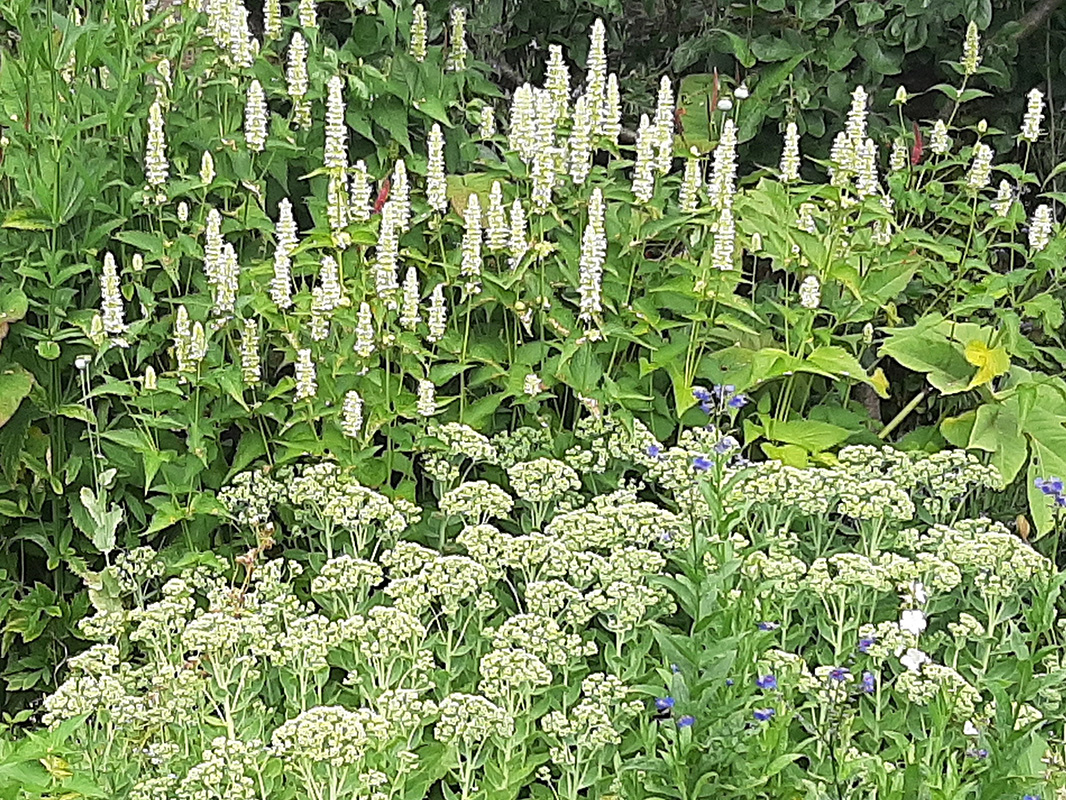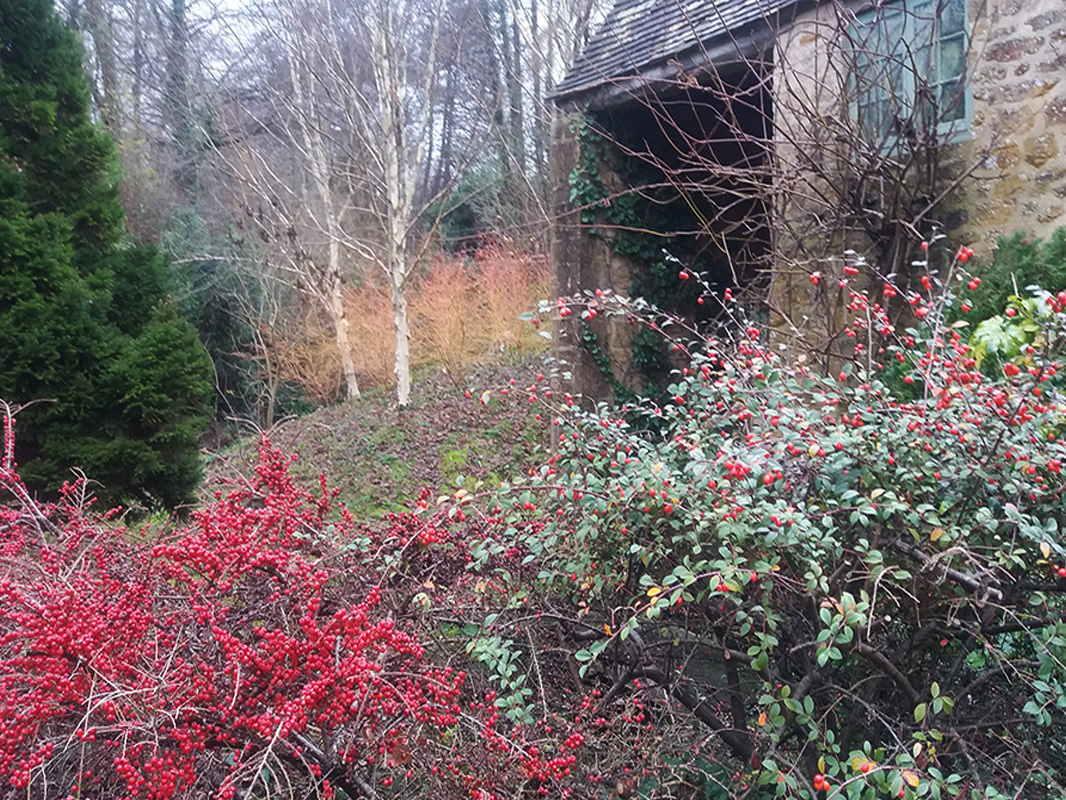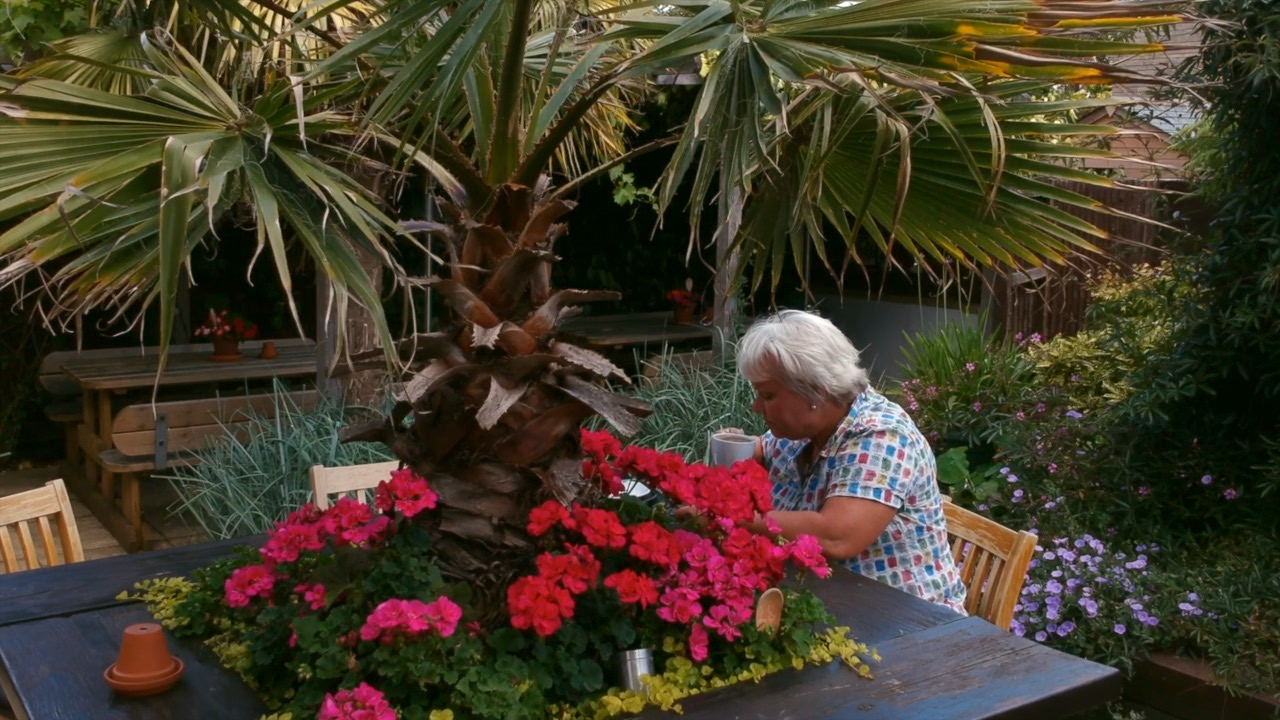‘Beast’ and drought proof plants
Just as we thought we would be dodging tumbleweed rolling down the streets, along came an inch or two of rain on Sunday 29th July, enough to postpone our worst fears of our gardens transforming into deserts. Although we had no severe periods of frost last winter, the snows of the Beasts From The East 1 and 2 in March made spring very late, followed immediately by a warm spell in April which made the perennials grow so fast there was no time to split them.
It has been well worth observing which plants have managed to sail through these extremes and which have suffered more than usual. Our large native trees and well-established shrubs have been largely all right, having been used to such extremes for centuries. Tough birches are showing stress by dropping their leaves early, and Dutch Elm beetles are attacking every hedgerow elm with a trunk bigger than 14 cm in diameter. They tunnel under the bark destroying the cambium layer through which the tree draws up water to the leaves, which have died and turned fox brown.
Crocosmia Lucifer, usually drought tolerant, is now lying down turning brown. This is one of the larger crocosmias with a good deal of leaf – the shorter ones are not suffering as badly. Spray chrysanthemums are surely due a come-back. My single pink one needed neither winter protection nor any summer watering and is unperturbed.
Ornamental grasses have done well, being used to icy winters and burning summers on steppes, veldts and prairies. Grasslands form 70% of the world’s landmass, and the areas on good soil have been largely ploughed for agriculture, so truly undisturbed native habitats in the First World are rare. There are grasses for every open situation. Sedges and hakon grass will tolerate some shade, with many beautiful forms. It is well worth visiting Knoll Gardens near Wimborne to see so many grasses in full glory from now till November, and consider some for your borders.
When the trend for grasses started over 30 years ago, the large forms of Miscanthus and Cortaderia were popular. Now Knoll sell many more of the smaller grasses, shin to hip high, as they fit better in smaller gardens. The Stipas, Pennisetums and Eragrostis families are the most drought tolerant and well worth growing anywhere sunny except on the wettest clay.
For such situations, you may still have grasses. If you mound up your borders with imported gritty topsoil over your heavy clay, you can put your new grasses straight into the mound, facilitating winter drainage. Plant at least an inch deeper than in the pot as the soil will settle. Select only two or three forms or the border gets too fussy looking. Partnered with knapweeds, achilleas and crocosmias of a non-falling down persuasion, the beauty will persist through autumn and grow throughout the years despite the vagaries of the British weather.



